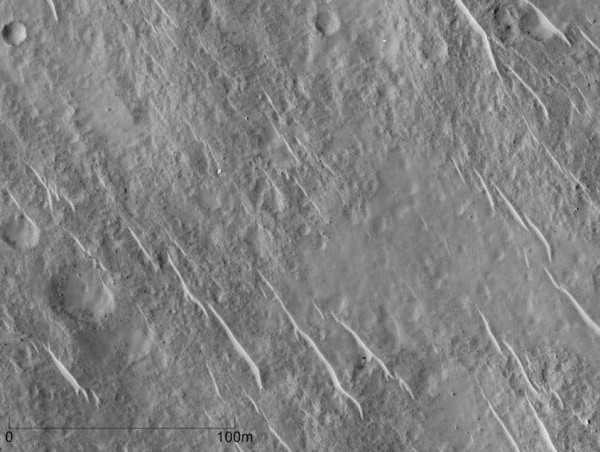By Ana Verayo, | April 27, 2016

Beagle-2 landing site
Astronomers have now enhanced the image of the missing European Space Agency's Beagle 2 lander on Mars, revealing surprising unprecedented detail of the surface of the Red Planet using a unique computer imaging technique similar to sci-fi films zooming in on bizarre objects on an alien world.
Like Us on Facebook
This method uses a this "stacking and matching" technique that can allow researchers to choose objects up to five times greater than the original resolution of the images. This is known as the Super-Resolution Restoration (SRR) used by researchers from University College London to identify individual or separate objects on the surface of Mars.
According to Jan-Peter Muller from UCL's Mullard Space Science Laboratory, this is comparable to drone eye vision that can pinpoint anything and anywhere on the Martian surface with clear repeat pictures. This allows us to view objects with a much sharper focus from orbit than those images obtained by landers.
This method can also help select the safest landing spots for future rovers and landers and even explore vast fields or terrain such as ranges and deserts, that will take months for a rover to reach by land.
In this new image, the resolution was zoomed in four times to reveal a bright blip on the surface of the dusty planet. This only proves that the ESA rover that was previously believed to be lost forever apparently landed on Mars in 2003 but failed to charge its solar panels.
According to Mark Sims from the University of Leicester who is the former mission manager of Beagle 2, even with super resolution images, you can only see a series of blobs since the lander is so small. He adds that however, it does show that it is on the surface appearing to be partially deployed, pertaining to the image that was released by NASA's High Resolution Image Science Experiment last year, showing three specks of the probe, parachute and rear cover.
With this image data, the UCL team digitally enhanced it by stacking and fitting together as much as eight HiRise images of the same area from different angles, says Muller. This greatly improved the resolution that can now be detected by the largest telescopes on orbit, but now, it is only limited to about 10 inches, seen by a telescope orbiting Earth and Mars.
With the SRR technique however, astronomers can examine objects as small as five centimeters using the same telescope by enhancing the small patch by 2,000 by 1,000 pixels which can take a period of three days of lab processing.
Other enhanced images show Martian ancient bed with really sharp details and even revealing the tracks of NASA's Spirit rover. This new study is published in the journal Planetary and Space Science.
-
Use of Coronavirus Pandemic Drones Raises Privacy Concerns: Drones Spread Fear, Local Officials Say

-
Coronavirus Hampers The Delivery Of Lockheed Martin F-35 Stealth Fighters For 2020

-
Instagram Speeds Up Plans to Add Account Memorialization Feature Due to COVID-19 Deaths

-
NASA: Perseverance Plans to Bring 'Mars Rock' to Earth in 2031

-
600 Dead And 3,000 In The Hospital as Iranians Believed Drinking High-Concentrations of Alcohol Can Cure The Coronavirus

-
600 Dead And 3,000 In The Hospital as Iranians Believed Drinking High-Concentrations of Alcohol Can Cure The Coronavirus

-
COVID-19: Doctors, Nurses Use Virtual Reality to Learn New Skills in Treating Coronavirus Patients







